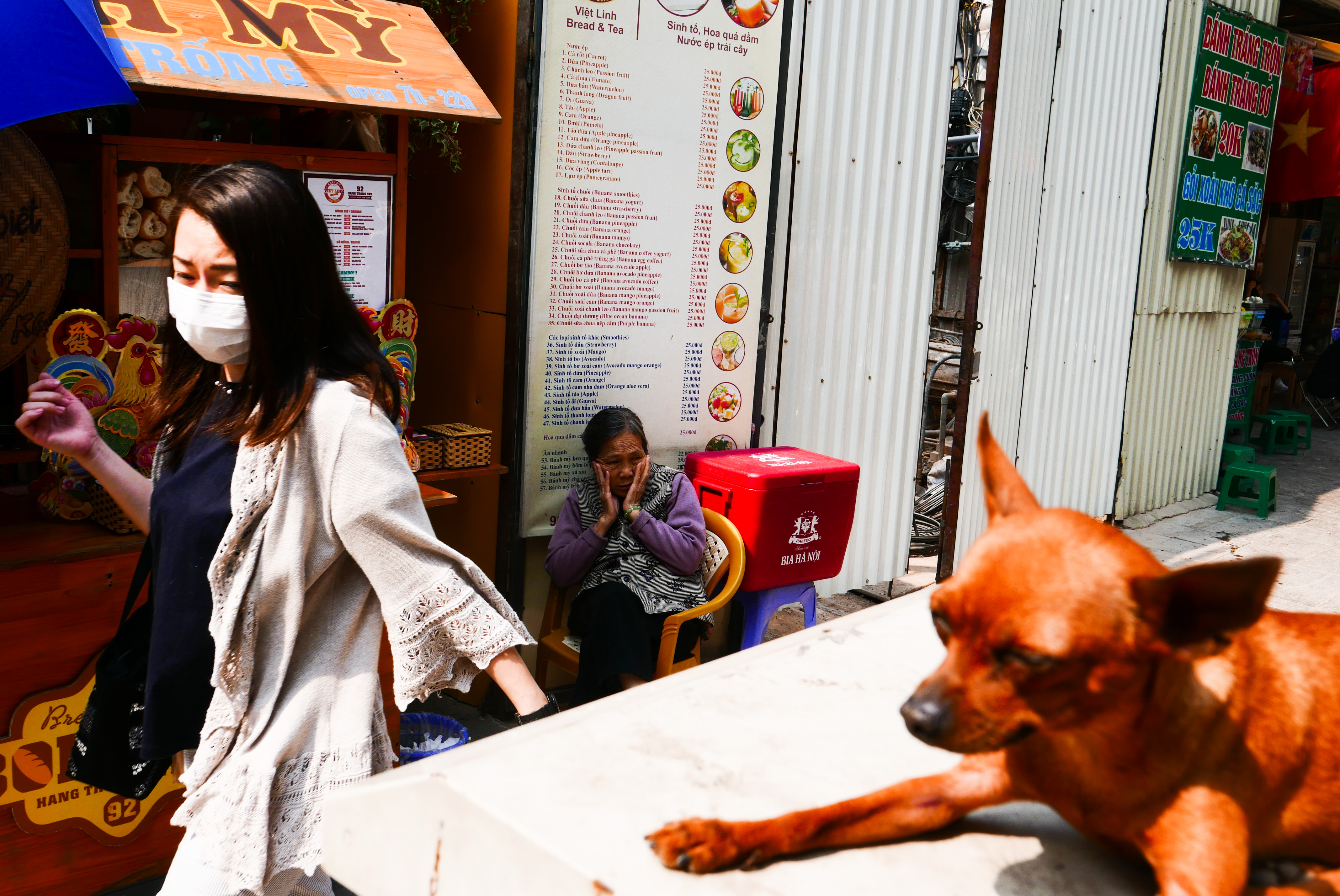Urban life in Vietnam happens on the sidewalks. The blurry line between public and private, everyday living and commercial livelihood occurs in the few feet of concrete between building and rush of motorbike traffic. This scene captures the deep layers of Vietnamese urban life. Taken in a comparatively quiet back street of the Old Quarter in Hanoi, this image reveals the juxtapositions between past and present, movement and stillness, hope and surrender. The three central figures, a small dog dozing in the foreground, a young woman swiftly exiting the scene, and an older seated woman with hands clutching her face—each figure tells a story of a changing Vietnam.
A sociological and historical analysis reveals the multiple economic, political, and environmental layers at work. Each of the three figures produce and reproduce what Pierre Bourdieu explains as the “symbolic relations of power…within the structure of social space.” Over the past ten years of rapid urbanization in Vietnam, dogs, cats, and other pets have become a popular trend and symbol of social capital for the expanding middle and consumer class. The Chihuahua was a tired, breeder dog who had born litters of puppies for a booming pet market.
It was this sleepy, exhausted mother Chihuahua bathing in the sunlight on a piece of city electrical equipment that drew me to the scene at first. I photographed primarily the dog, and thus went generally unnoticed, camouflaging into the bustle of street life. As if gazing from the perspective of this worn and tired maternal animal, I looked around and witnessed the soundtrack of urban life passing by. For 20 minutes I stood and photographed that crowded sidewalk and watched crowds of tourists, Hanoians, and construction workers breeze by me, the dog, and the seated woman without ever noticing all of us as individual actors. We were enmeshed into the moving, breathing body of urban life.
The old woman sits nearly motionless, hands clutching her face in despair, staring into the distance. She awaits the infrequent customer to sell her noodle soup to both Vietnamese and tourists (as noted by the translated and well produced menu signage.) Her hand gesture suggests a quiet surrender—a stark juxtaposition to the loud construction site behind her and the symbols of the rooster for the Lunar New Years to her right and the national flag of Vietnam on her left.
I captured the speedy motion of everyday life in the movement of the woman draped in beige—her arms extended in swift determination to her destination, her face hidden by the facemask. Khẩu trang – the facemask has become an iconic part of the uniform of everyday Vietnamese urban life. Initially designed as a surgical mask to protect the transmission of germs particularly between doctors and patients, the facemask has become a necessity for all urban dwellers in Vietnam and throughout rapidly developing cities throughout Asia. The thin, mass factory produced sheet of tissue paper suspended by elastic has become the people’s solution to national and international failures to regulate the pollution resulting from rapid industrial development and factory production. “What else could we do?” Many Vietnamese utter this exasperated sigh, shrug in defeat to the current state of urban air quality. And so they don the facemask fully recognizing its futile promises of protection from the rapidly spreading “pollution sickness.”
Each of the figures in the photograph look in a different direction, deep in thought as if in pursuit of a different ideal. The viewer’s eyes are drawn to the the white construction site in the background, its door left slightly slightly ajar to entice the viewer to peer in. Rather than a momentous reveal to the promises of a bright and shiny new modern building, we see the messy state of industrial development—a glimpse into the human psyche of the three figures. i. Bourdieu, P. (1989). Social Space and Symbolic Power. Sociological Theory, 7(1), 14-25. P.21

Commentary on Rachel Tanur's Works: China Old and New